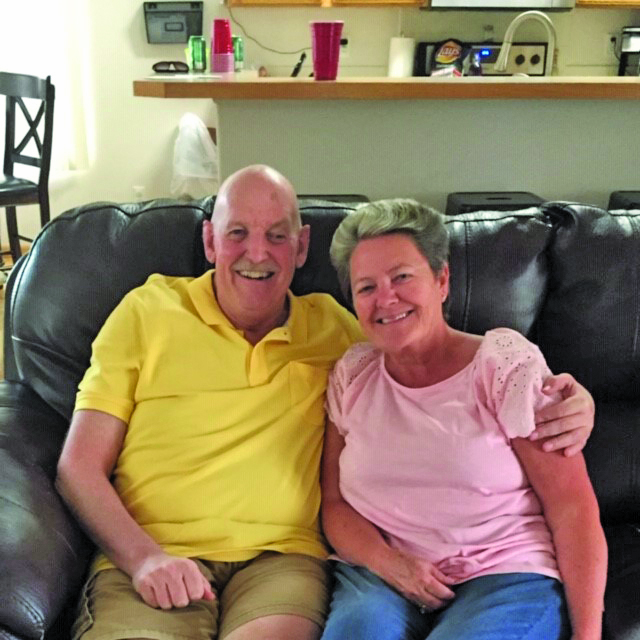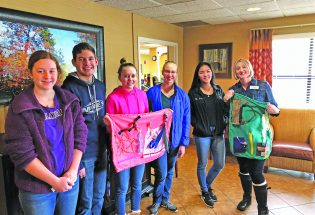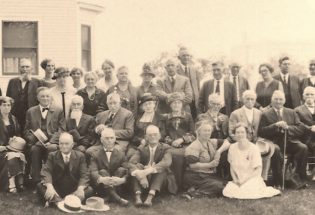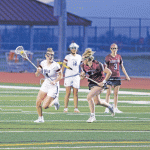Stroke awareness month: Timing is everything
Special to the Surveyor
Earlier this year Mike Figal experienced a stroke out of the blue on his 60th birthday. Luckily, his wife Tammie reacted quickly to the situation and called 911, getting Mike into the helpful hands of the emergency medical services (EMS) team and the teams at Banner Health’s North Colorado Medical Center (NCMC) and Swedish Medical Center. Because of the quick responses from every provider involved, Mike is expected to make an excellent recovery. With May being Stroke Awareness Month, it is important for you to know the signs of a stroke and how to react in order to ensure the safety of the person experiencing it.

What is a stoke?
There are two kinds of strokes, ischemic and hemorrhagic. An ischemic stroke, which Mike experienced, occurs when a blood vessel supplying blood to the brain is obstructed. A hemorrhagic stroke occurs when blood from an artery begins bleeding into the brain. In Mike’s case, a blood clot formed at the base of his brain and blocked the control center of his breathing, motor control and sensation. The EMS team that responded to Tammie’s 911 call arrived within minutes and assessed Mike’s symptoms. They quickly alerted the stoke team at NCMC that Mike was showing signs of a stroke, which prepared the team to treat him quickly when he arrived at the hospital. “The timely responses from each individual involved were monumental in saving Mike’s life,” said Meredith Frederick, MD and neuro-hospitalist at NCMC.
What are the symptoms and what to do if someone around you shows these signs?
The main symptom of a stroke is a sudden onset of neurologic symptoms. This can include loss of balance, numbness or weakness in the face, arm or leg, especially on one side of the body. “An easy trick to remember the warning signs of a stroke is the mnemonic B.E.F.A.S.T, which stands for balance, eyes, face, arms, speech and time,” said Dr. Frederick. “If someone shows instant neurologic symptoms, call 911 immediately and have the person stay put until medical assistance arrives. If possible, make note of what time the symptoms started or what the time was when the person was last seen in their normal state.” This information is crucial for the responders when determining what kind of treatment to give.
What treatment is given to people who have experienced a stroke?
Due to the fact EMS alerted the stroke team at NCMC while transporting Mike, the stroke protocol was already in place when Mike arrived at the hospital. The team immediately obtained a computed tomography (CT) scan of Mike’s brain and blood vessels and confirmed there was a blood clot at the base of Mike’s brain. As soon as the blood clot was detected, the team contacted the Swedish Medical Center letting them know Mike was going to be flown there for emergency surgery to remove the blood clot. Once Mike arrived at Swedish in Denver, he was immediately taken to the interventional neuroradiology room and the blood clot was removed.
What does recovery for a stroke look like?
Days after Mike’s procedure, he was transferred to a rehabilitation center where he recovered for two weeks. Once discharged, Mike continued his speech, physical and occupational therapy. He is actively participating in outpatient rehab and is expected to make a great recovery, largely due to the quick responses from his wife Tammie, the EMS team, and the teams at NCMC and Swedish Medical Center.
- April, 07 2022

Kraft Soil Solutions offers clean, gr...
Like Colorado’s brewers, Mike Parsons and Greg Dabney have their own take on making a...
- July, 13 2017

Public access to Lonetree Reservoir w...
By Amber McIver-Traywick The Surveyor Lonetree Reservoir, located northwest of Berthoud, will remain open to...
- April, 30 2018

Berthoud High students show compassio...
By Katie Harris The Surveyor It’s been nearly a year since Berthoud High School (BHS)...
- March, 25 2022

Berthoud Day celebration makes a come...
After two long years without a full celebration of Berthoud Day due to the COVID-19...
- March, 16 2017

Trustees take first step in search fo...
By John Gardner The Surveyor The process to select a new town administrator took a...
- August, 05 2021

Police involved shooting in Berthoud
Around 10 p.m. Wednesday night Larimer County Sheriff’s Office received a report of a suspected...

POLICEBLOTTER
Community News
Northern Water sets C-BT quota at 70% for 2024
Community News

Emotions run high during Revere Property hearing
Community News
Snowpack at 119% above normal
Community News

Karspeck to serve third term as Berthoud mayor
Community News

OPINION – No bitchin’ allowed
Community News
Roy Tripi to become principal of BHS on July 1
Community News
COMMUNITY CALENDAR:
Community Calendar – add an event
Homestead Fine Art Gallery First Fridays OPEN HOUSE
03 May 4:00 PM - 7:00 PM
Homestead Fine Art Gallery First Fridays OPEN HOUSE
07 Jun 4:00 PM - 7:00 PM
Homestead Fine Art Gallery First Fridays OPEN HOUSE
05 Jul 4:00 PM - 7:00 PM
Homestead Fine Art Gallery First Fridays OPEN HOUSE
02 Aug 4:00 PM - 7:00 PM
Homestead Fine Art Gallery First Fridays OPEN HOUSE
06 Sep 4:00 PM - 7:00 PM
Homestead Fine Art Gallery First Fridays OPEN HOUSE
04 Oct 4:00 PM - 7:00 PM

